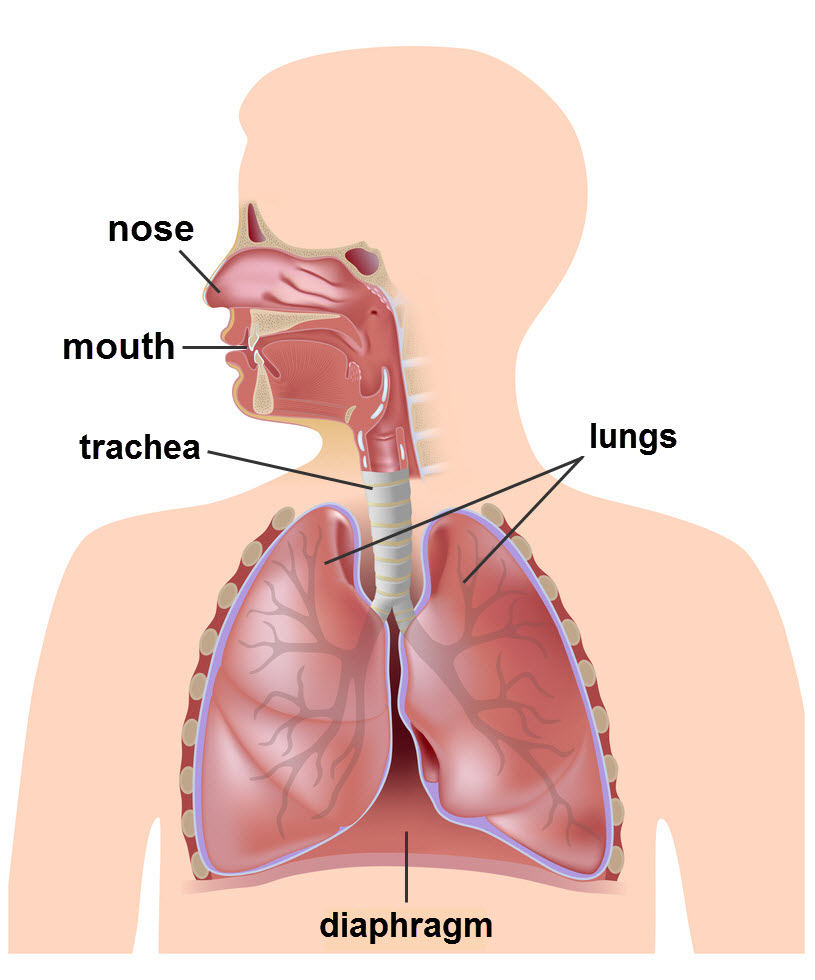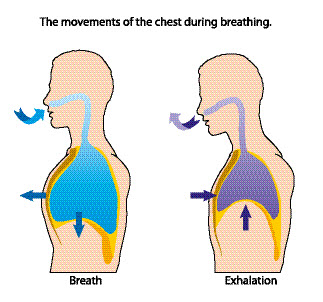Breathing... it is something that you do all the time, every day, without even thinking about. Even as you read this your respiratory system is at work, taking air both in and out of your lungs, but how does it work?
The respiratory system has two very important jobs to do. The first is to supply the blood with oxygen; the second is to remove any waste carbon dioxide from the blood.
The respiratory system involves the mouth, nose, trachea (windpipe), lungs and diaphragm (the layer of muscles found under your lungs).

Breathing In
Right, take a deep breath. As you inhale, the air travels through your nose and mouth, down the trachea and then splits into your two lungs. But that's not all...
If you put your hands on your rib cage you will notice that they expand up and out as you breathe in, allowing the air to fill your lungs.
Your diaphragm will also contract, pulling downwards to allow more air into the lungs.
Breathing Out
As you breathe out, the opposite occurs. The exhaled air leaves your lungs, travels up the trachea and then leaves your body through your nose and mouth.
If you put your hands on your rib cage you will notice that it drops in and down as you breathe out, allowing the air to be pushed out of the lungs.
Your diaphragm will also relax, pulling upwards, allowing more air to be pushed out of the lungs.
This process of breathing in and out is often called ventilation.

The respiratory system gets its name from a process called respiration. Respiration happens in all of our cells. It's a chemical reaction that uses the oxygen we breathe in to release energy from sugar (or glucose to be more scientific!).
Respiration and breathing are two different processes, but they rely on one another - we need to breathe so that respiration can happen.

